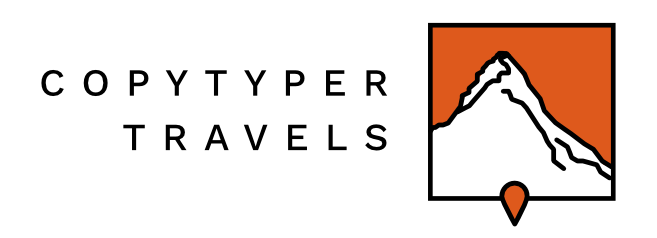The Slate Islands aren’t talked about as much as they should be, these lovely islands are so unique and are well deserving of a visit.
The Slate Islands are in the Inner Hebrides and if you’re coming from central Scotland, they are quite easy to get to (especially if you drive). I stayed just north of Oban when I visited them and it took me about 35 minutes by car to get to Seil.
The Slate Islands are known as the islands that roofed the world. When you visit, it’s no surprise as there is slate everywhere – there are fences made from slate, slate walls in people’s homes, and slate beaches. Walking along the beach, I loved the noise my shoes would make on it and how it was quite rickety to step on!
Shuna, Torsa and Belnahua also make up the Slate Islands but are either uninhabited or privately owned.
Seil
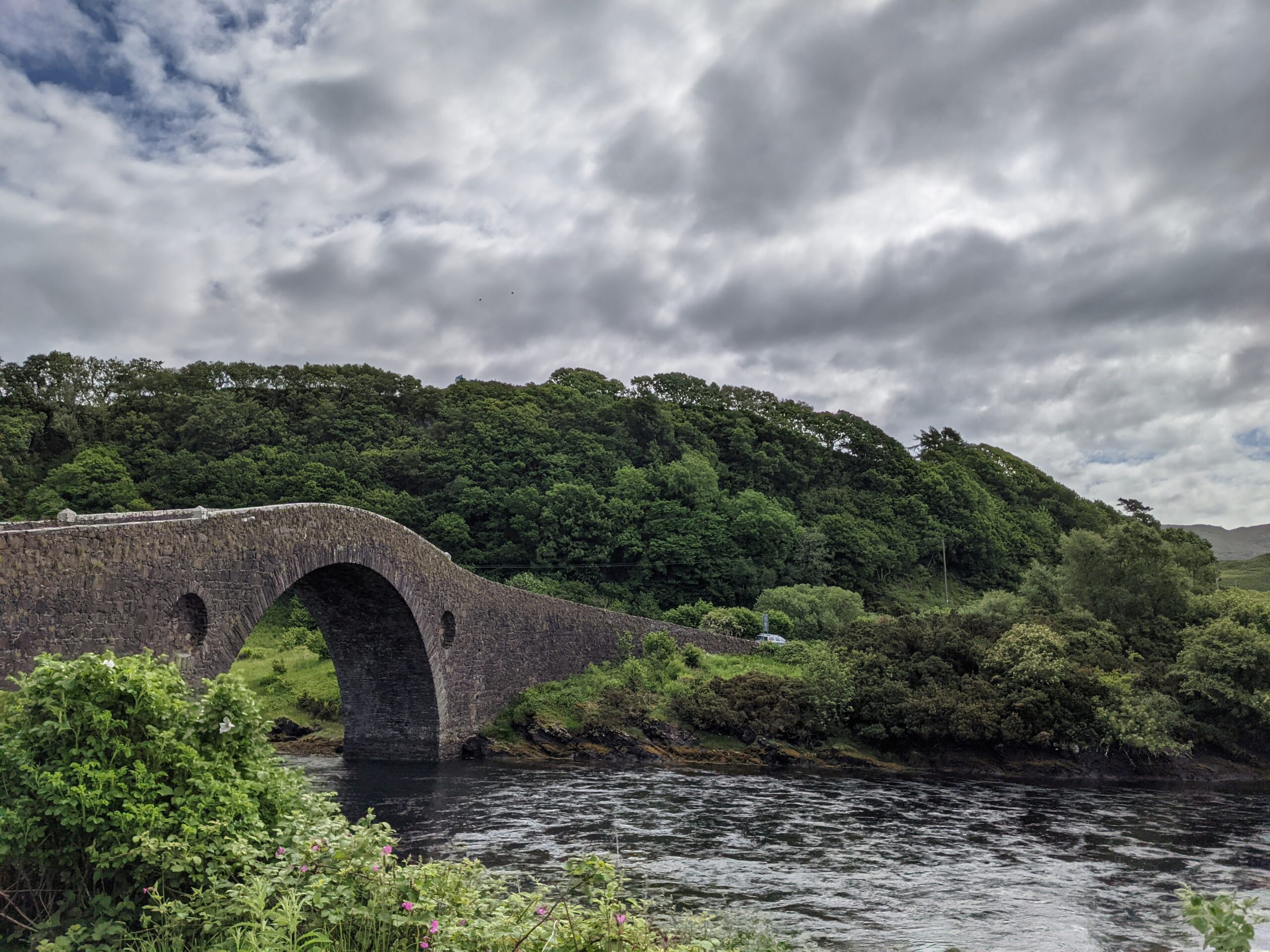
Seil island is the easiest of the Slate Islands to get to. It’s connected to the mainland by the Bridge Over the Atlantic or the Clachan Bridge, which is fun to drive over. Just after the bridge, there’s the Tigh an Truish Inn which serves food and drink.
We visited the lovely area of Ellenabeich with its white cottages. This feels like the main area of Seil as there’s a small museum and a restaurant called The Oyster Bar. We had lunch here and sat outside where we stared at the blue sea and watched a baby seagull. We had a look around the museum which gave more of an insight into island life and the history of the islands – a friendly volunteer was there to answer any questions too.
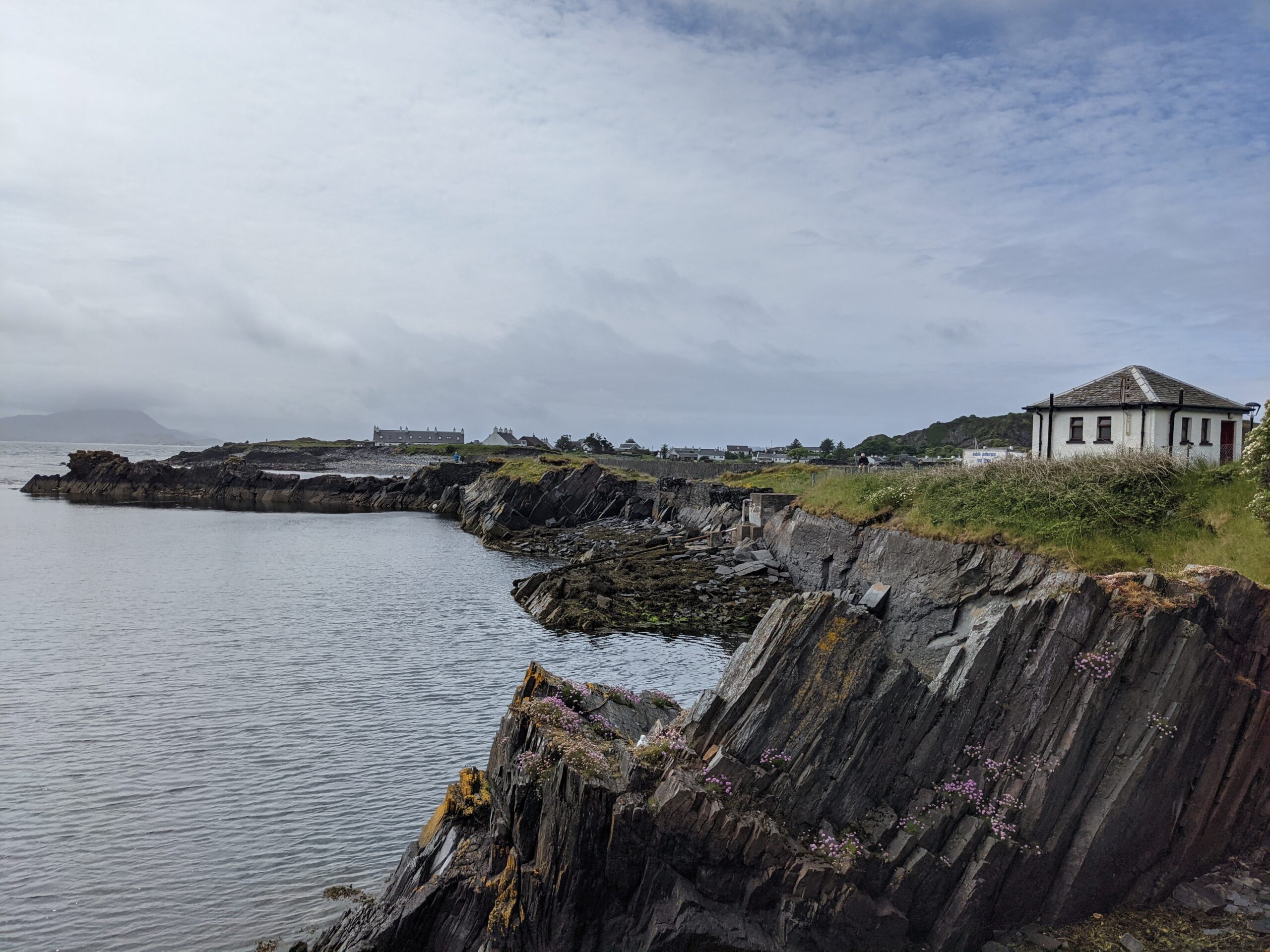
There’s also plenty of free parking as this is where you can park up to visit the car-free island of Easdale.
Easdale
From the ferry port at Ellenabeich, you can already see the island of Easdale. I imagine that if you knew someone on Easdale, you could quite easily spot them waving at you! There are public toilets and a small waiting room. If you go into the waiting room, there’s a button you can press to summon the ferry – I was gutted that when we went, there was a queue already forming so we didn’t need to press it.
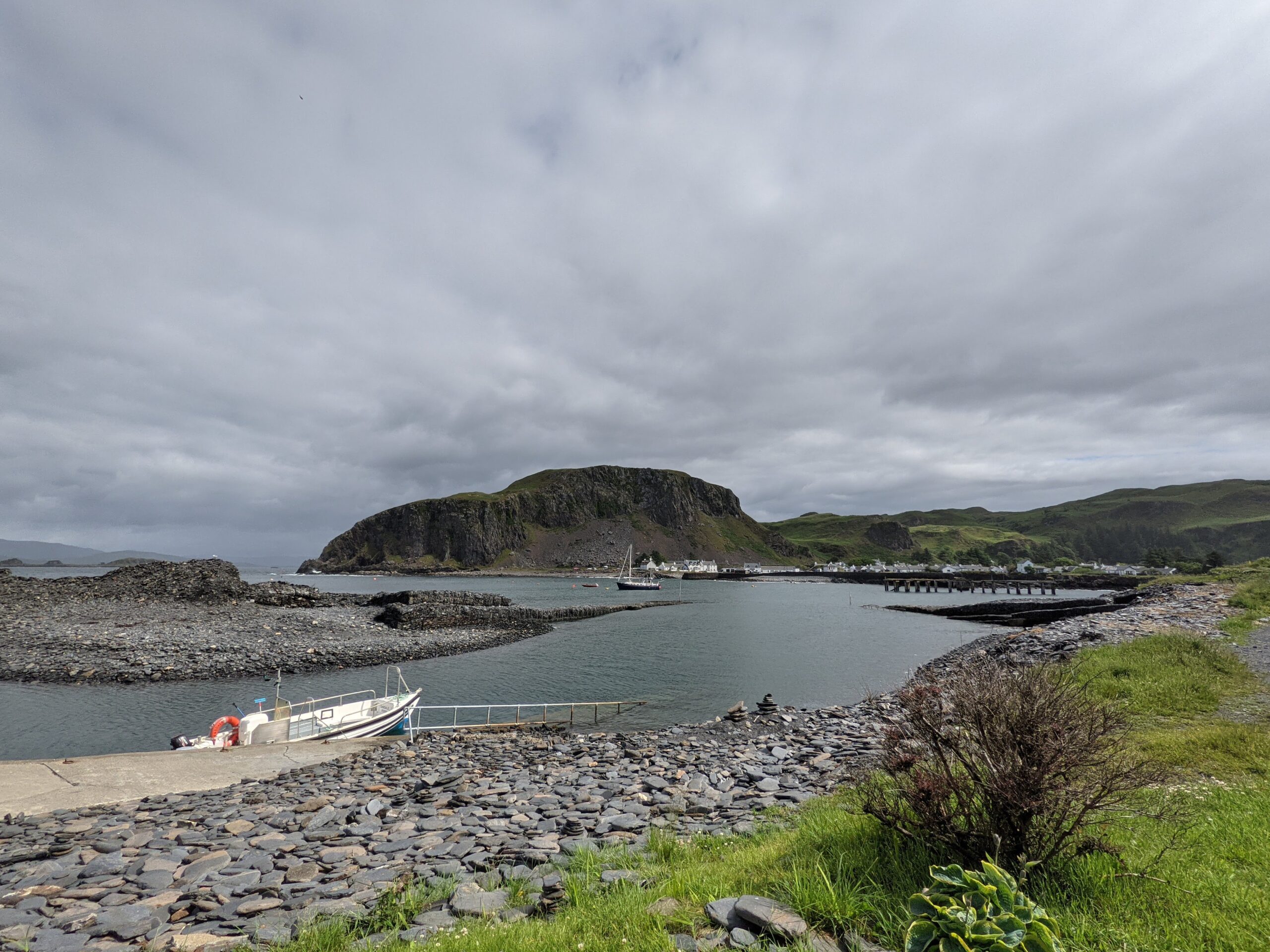
The ferry if you can even call it that – it’s more of a tiny boat – only seated about four of us but I feel like that added to the fun of the journey. It was so quick getting to Easdale that by the time I had paid for my return ticket, we were there!
As Easdale is a car-free island, it was easy to wander around. We had been on the ferry with the postwoman who was power walking around the island to deliver everything so she could get back on the boat in good time!

As soon as you get off the ferry, you are met with a few rows of wheelbarrows – all painted with numbers on. I think us visitors find this so novel, that wheelbarrows have replaced cars here.
We took a saunter around the island and passed the museum, the visitor centre and a restaurant. Unfortunately, these were all shut when we went but we still had a great time just walking and looking at the view – and being so close to the ocean.

It’s possible to do a circular walk around Easdale, at one point, you end up at what looks like natural swimming pools where we saw oystercatchers on the lookout for food. We walked past lots of slate boulders – Easdale just felt very different to any other place or island I’d visited before.
Luing
You can take cars to Luing but we decided that we wanted to go over as foot passengers as I often feel that when an island is so small, there usually aren’t that many places to park and I feel like the scenery whizzes on past. The ferry only took about two cars, maybe three at a push, and the passenger waiting room inside just had a chair! This journey was quick again and as we got off, we just followed the main road and started our walk to Cullipool.
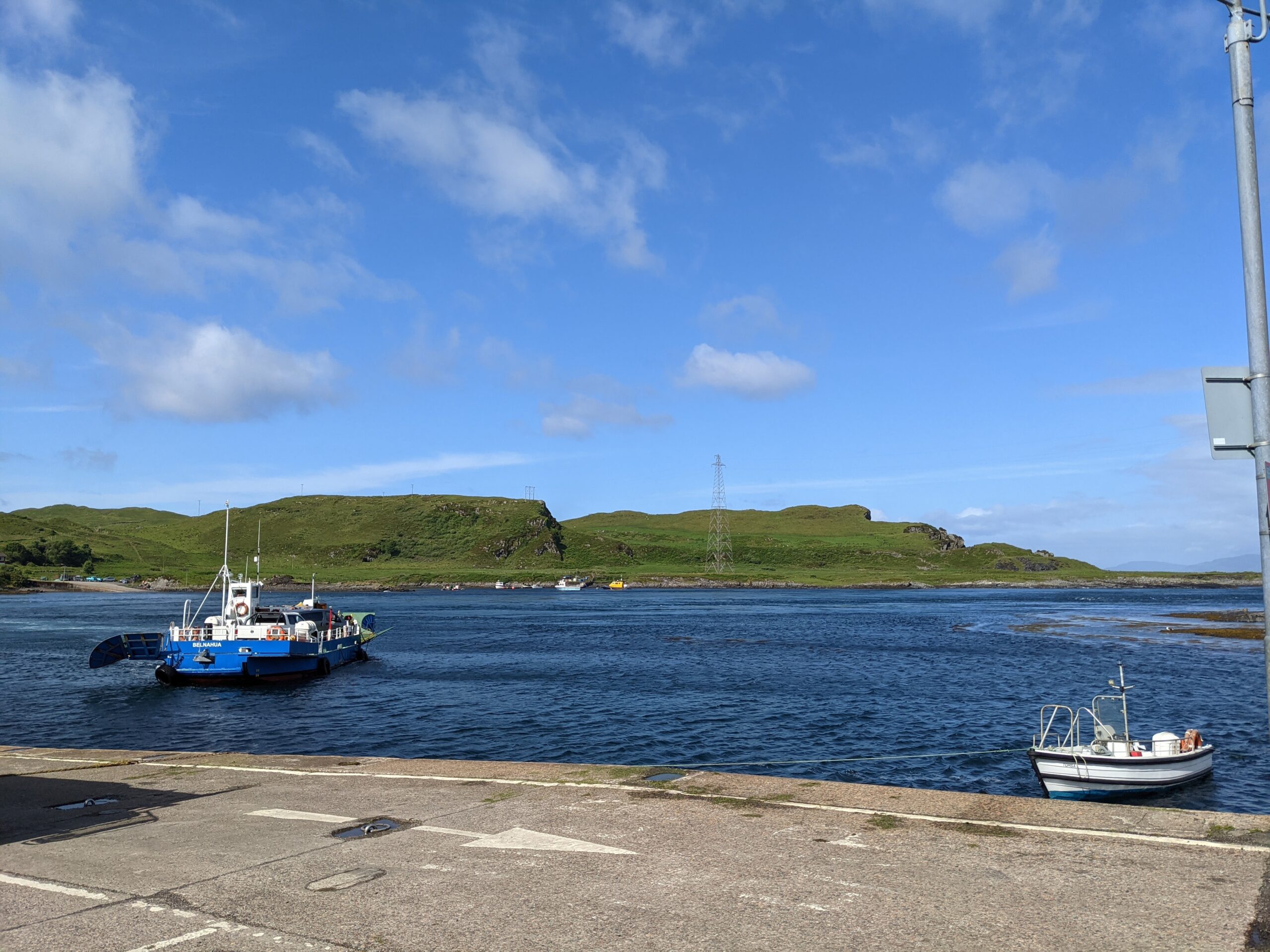
Cullipool was a 40 min walk from the ferry but it flew by as it was so picturesque.
As we made our way to Cullipool – we passed some cows on the side of the road. It was a bit nerve-wracking especially as one cow was hiding behind a bush and I didn’t notice until I got closer and saw an eye staring back at me!
Cullipool is a lovely little place with white cottages on quaint little streets. We stopped at the Atlantic Island Centre for food which was a modern building with views out to the ocean.
We just had cakes as we were too early for when they started to serve lunch – good idea to check menu times when you go!
After scones at the Atlantic Island Centre, we wandered over to the island’s edge where there are lots of piles of slate stacked up that people create. Cullipool’s answer to sandcastles!
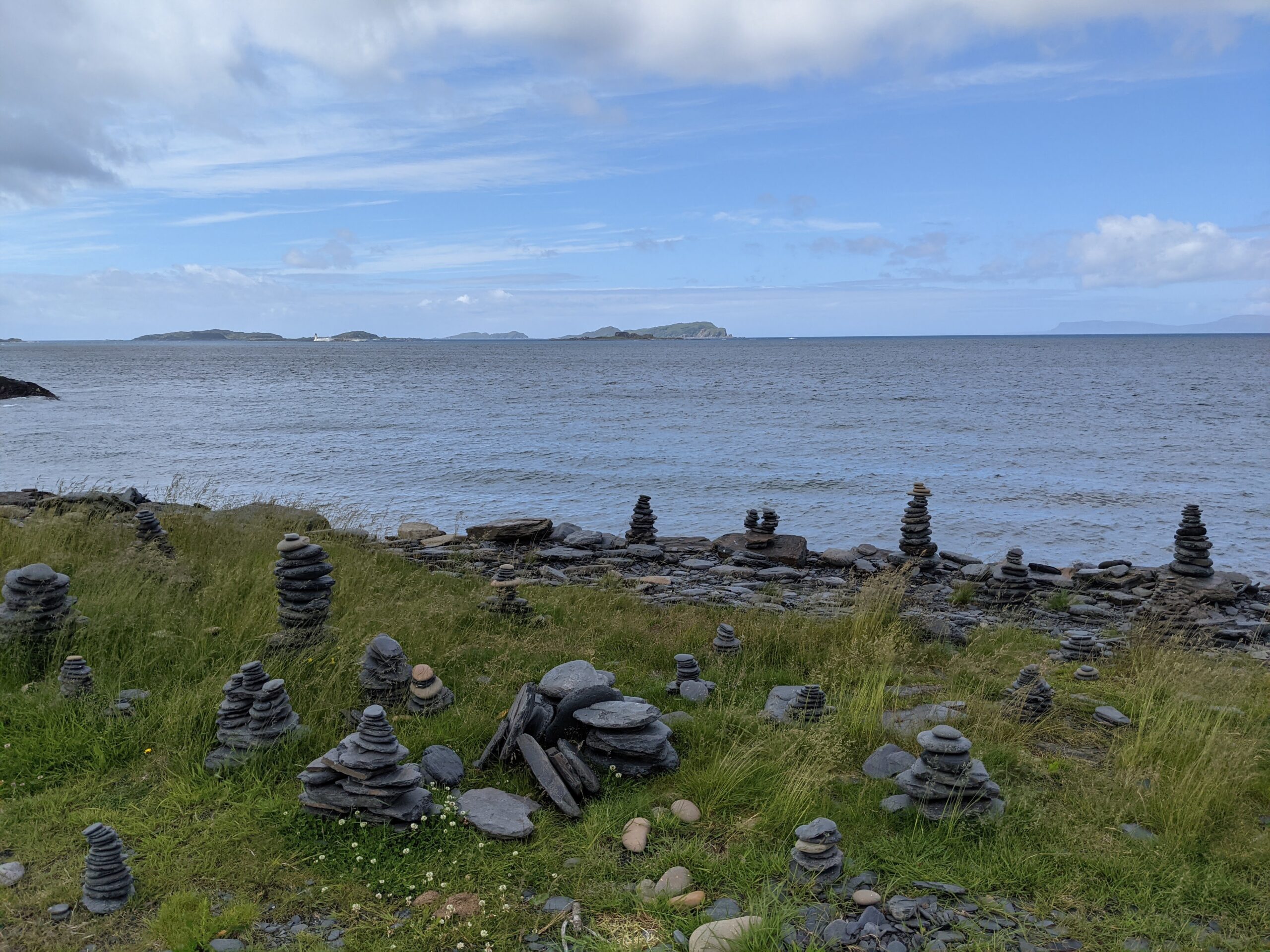
Walking back through the village, we headed in the direction of the church. Past the church is a pathway that led us to the hill that we wanted to climb – Cnoc Dhomhnuill. We got a little lost as it was very grassy but we saw the trig point and made our way to Luing’s highest point. The Walk Highlands description of the walk was great and we would have probably been going around in circles if we hadn’t read it.
Cnoc Dhomhnuill
Location: Luing, Argyll and Bute
Height: 94m
Trig point
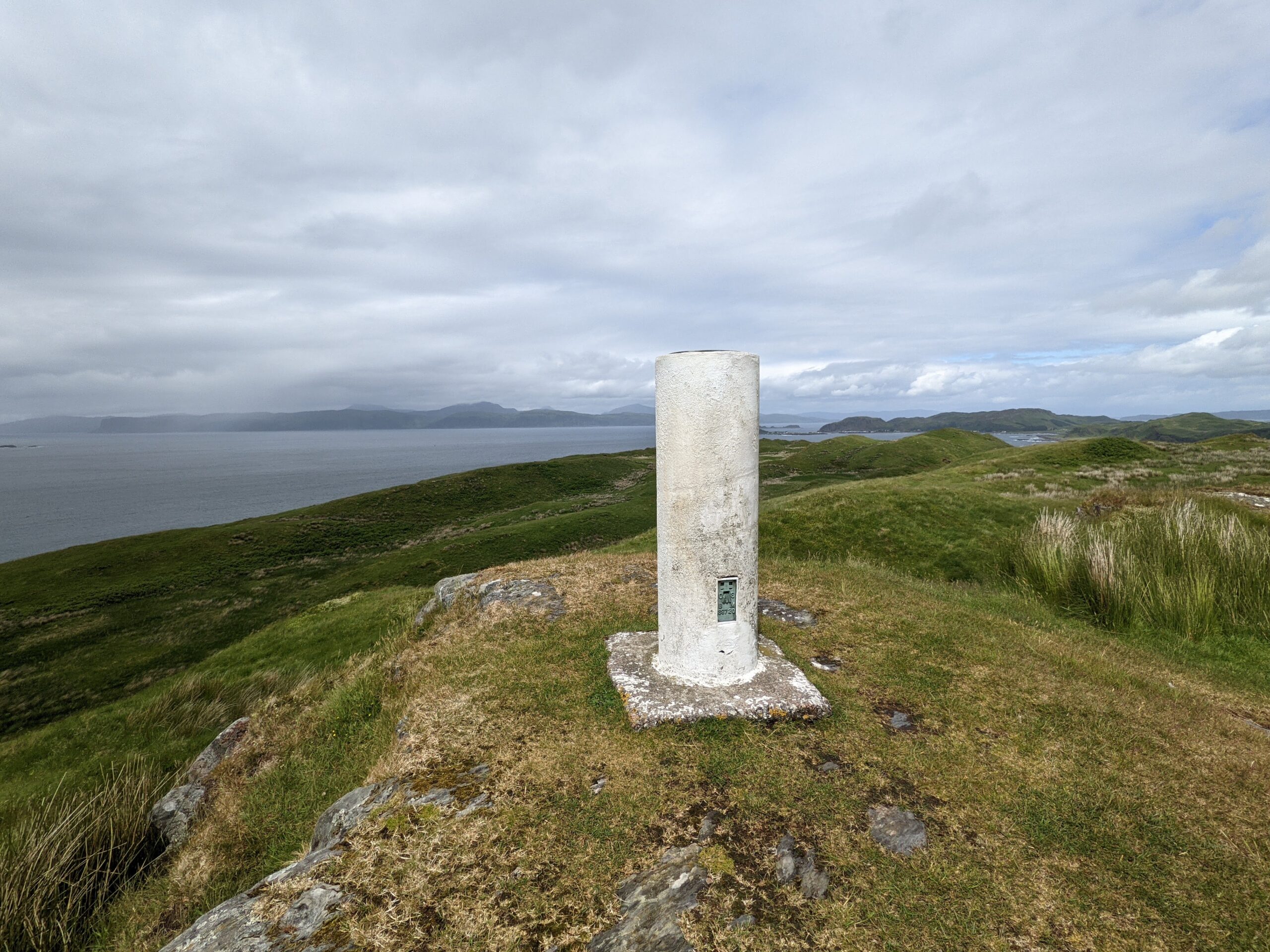
After our hill walk, we decided to make the journey back to the ferry port where we chatted to a local for quite a while as the ferry back got stuck at the other side after a lorry came off the ferry and made a massive clunk noise!
Luckily the boat finally made its way over so we weren’t stuck on the island but perhaps that wouldn’t have been such a bad thing!
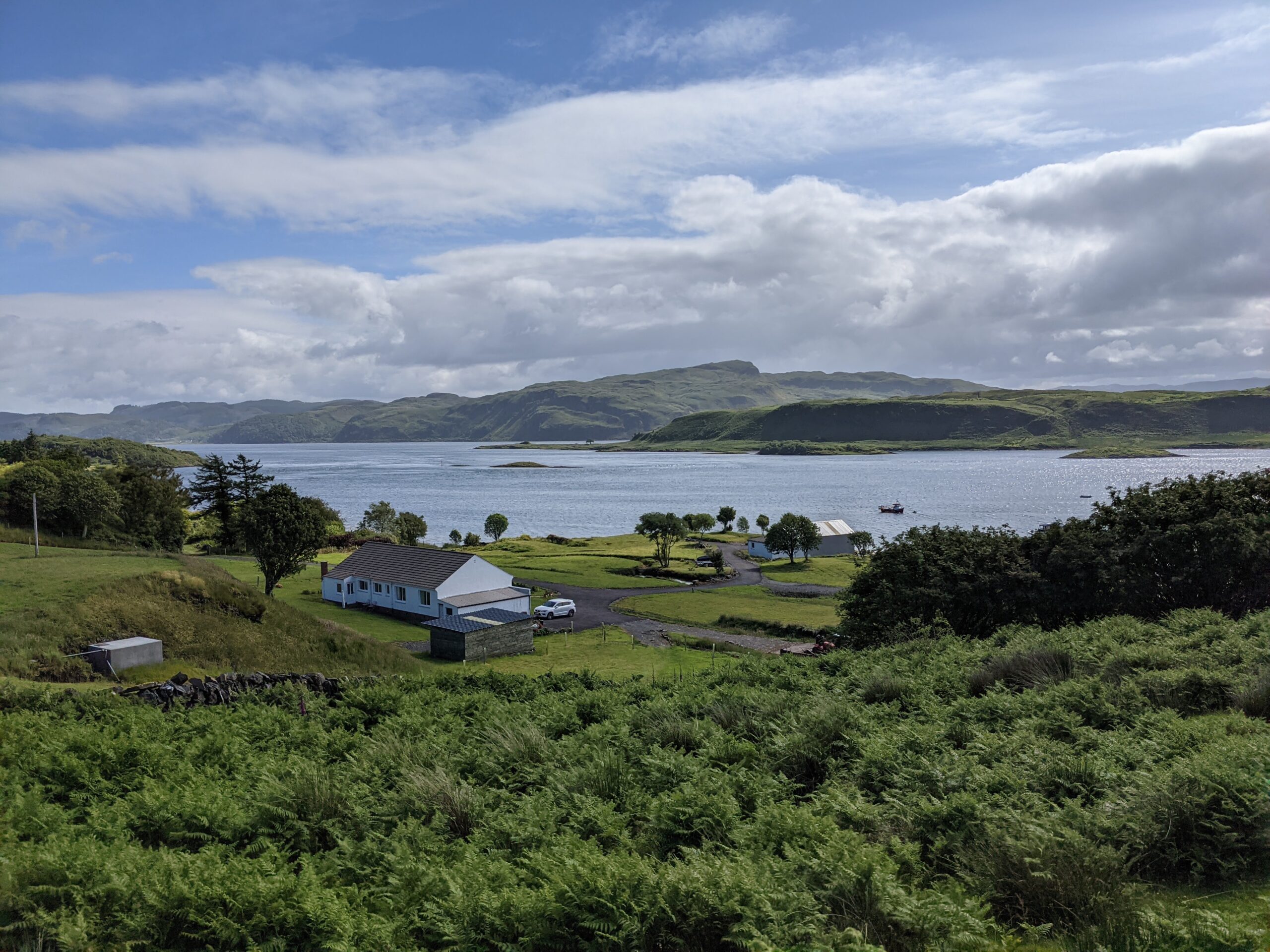
From speaking to people after my trip, it doesn’t seem that the Slate Islands are terribly well known. From central Scotland, if you have access to a car, they are pretty easy to get to so I’d recommend making a trip as they are unique and you don’t get a feel for it until you’ve been and experienced it for yourself.
